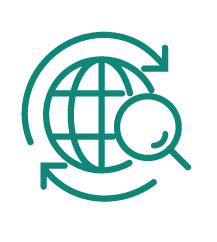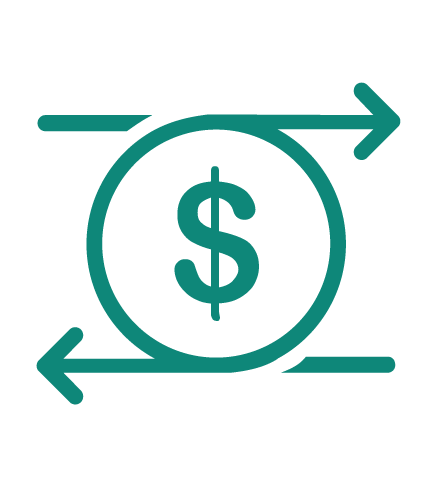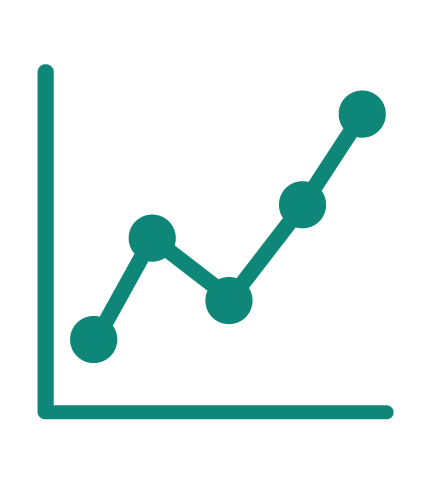A Shifting Economy
![]()
Tighter monetary policies globally, focused on bringing stubborn inflation in line with central bank targets, have increased the odds of a recession. That said, we believe economic elements are in place to sustain the late expansion phase of the credit cycle. Though the market may experience weak profit growth going into 2023, corporate and consumer fundamentals are currently healthy, giving them a favorable footing if the economy shifts. Valuations point to potential opportunities in risk assets—albeit in a volatile environment.
Investment Theme Key Takeaways
Our take on macro drivers and major asset classes at a glance.
We believe significant downside pressure on fixed income and equity markets is likely to subside.
Macro risks skew to the downside, with most major economies entrenched in the late expansion phase of the credit cycle.
We foresee higher long-term yields and central bank policy rates. We favor remaining underweight duration during the early innings of major central bank tightening cycles.
Tighter US monetary policy continues to support the dollar as global growth concerns mount. Until global growth begins to improve, perhaps led by China, we may not see foreign currencies consistently outperform the US dollar.
It is difficult to build an upside case until inflation retreats and the Fed pivots. We believe bottom-up corporate fundamentals need to hold up to support valuations.
We favor taking advantage of credit and equity market dislocations where valuations have cheapened and sentiment is overly bearish.
Recession Watch
Risk markets appear to be pricing in a significant economic slowdown—not recession.
- Valuations came under pressure in the first half of 2022, especially for long-duration assets, as the market discounted future cash flows with progressively higher interest rates—a relevant process in the current rate environment.
- Market valuations reflect expectations for further rate hikes. While we acknowledge increased odds of a US recession, we currently do not see one developing in the next six months.
- At this point, we see a strong labor market and solid corporate fundamentals underpinning the economy and risk asset valuations.
- US Federal Reserve (Fed) policy can have a long and variable lag. Patience will be required as the Fed raises rates in an attempt to curb inflation.
Macro Drivers
Stubborn inflation has forced central banks to hike rates despite weakening economic data.
- Historically, the late stage of the cycle has been one of the longest phases of the credit cycle. However, this time may be different. We believe investors might face the downturn phase much sooner than the post-GFC cycle experience.
- Near-term consensus inflation forecasts suggest central banks, such as the Fed, will not bring inflation down to their target levels until 2024. In contrast, long-term inflation expectations remain anchored around target levels.
- Our frameworks suggest that consumer price inflation will likely persist and central banks could continue hiking policy rates.
- We revised our global economic growth expectations lower during the past six months while we revised central bank policy rates higher. Consensus expectations of corporate profit growth have held up well, but may come under some pressure heading into 2023.
- Our measures of corporate health suggest deterioration in bottom-up fundamentals could be on the horizon. However, anticipated weakening in profit margins and other metrics is starting from positive levels.
Credit
Spreads may not tighten substantially from here, but we expect carry to persist relative to US Treasurys.
- The long-duration nature of investment grade credit should be less of a headwind for performance going forward now that rates have risen substantially.
- The US high yield credit market appears to be pricing in a default rate of 4.5% to 5.0%. In contrast, our corporate health frameworks suggest a default rate of 2.0% to 2.5%.
- The average price within the US S&P/LSTA Leveraged Loan Index is around $95. Over the long term, we expect that to improve given the forecast for low defaults, a generally healthy corporate outlook based on current fundamentals and the likely return of investor demand for discounted loans.
- Our projected 2022 emerging market corporate default forecast is up to 8.5% from 3.9% earlier in the year. The move is largely driven by distress in Russia and Ukraine corporates as well as the Chinese property sector. Excluding those idiosyncratic stories, our expectations for defaults are around 0.5% for 2022.
- Within securitized credit, we believe investors should consider focusing on shorter-duration opportunities like subprime auto, with a bias toward higher quality. Within CMBS, we continue to have a favorable outlook for selected seasoned subordinate bonds that tend to trade at distressed levels.
Government Debt & Policy
We wouldn't look for a repeat of the year-to-date spike in yields
- We believe core CPI inflation could remain well above 4.0% heading into 2023.
- We expect tighter monetary policy to prevail despite slowing economic activity, which is why we think recession risk is on the rise. However, given where corporate and consumer fundamentals are currently, we believe there is low probability for a recession.
- We project the fed funds terminal rate for this cycle will be around 4.0%. We think it could climb higher if inflation does not subside while the labor market remains in decent health.
- Government bond yields appear set to move higher across the globe, albeit at a slower pace than at the start of 2022.
- The sizable stockpile of negative-yielding government debt declined nearly 90% year to date and is likely headed even lower.
- Emerging market policy makers have been ahead of developed market central banks in fighting inflation. However, their hiking cycles may not be over. Food and energy comprise a large percentage of emerging market inflation benchmarks, which are currently biased upward.
Currencies
Broadly, we believe FX is unlikely to outperform the US dollar in a risk-averse environment.
- The US dollar may continue to rally as the global economy remains under stress and investors seek a perceived "safe haven."
- US Treasury yields—the global risk-free benchmark—are now at the highest nominal levels seen in over a decade. US yield levels may continue to attract foreign capital.
- At this juncture, long-term inflation expectations, measured by the US breakeven rate, indicate the purchasing power of the US dollar is not expected to erode materially over the long term, which could be a key positive driver.
- Our fair value models suggest the dollar is currently expensive. Global financial conditions would need to improve before we would broadly embrace foreign currency exposure.
- Within EM, we have been selectively seeking exposure to currencies that can offer moderate return potential, including carry. Currencies in countries such as South Africa, Brazil, Mexico and Chile have been among the top ranked relative to the US dollar.
Equities
Until inflation trends lower, a lasting equity market bottom and steady uptrend are unlikely.
- After the equity market’s dismal first-half performance, uncertainty surrounding inflation and the Fed’s willingness to keep tightening into a recession will likely continue to feed equity volatility.
- Central banks, including the Fed, appear more concerned about getting inflation under control than buoying investor risk appetite.
- Globally, consensus earnings estimates have held up so far, but they will likely come under pressure if economic activity slows.
- If earnings estimates begin to decline, then markets may not be as cheap as they currently appear, which could be a significant risk to future performance across global equity markets.
- To some extent, we have already seen some damage done. The S&P 500 median decline over the past 12 recessions has been 24.5%. On an intra-day basis the S&P 500 was down over 24% in 2022.
- Valuation contraction impacted all equity markets this year as interest rates spiked globally. We believe there is meaningful upside potential in global equities if inflation cools and recession is avoided.
- A shift in favor of growth-style equities is likely if inflation remains sticky while economic activity is subdued.
Potential Risks
Excessive inflation has been driving central banks to tighten despite recession concerns.
- The Fed may continue to tighten into labor market weakness, which could eventually lead to a domestic recession. The rest of the world could come under significant pressure if the US enters the downturn phase of the cycle alongside China.
- It is unclear whether or not commodity prices would decline substantially in recession. Such an event would have implications for inflation.
- Valuations across equities have corrected substantially but from elevated levels. That elevated starting point suggests more downside could be probable in the downturn phase.
- Corporate earnings and forward estimates have been a key pillar of fundamental strength through this cycle. If forward estimates start to weaken, we are likely to see more credit and equity downside.
- Expectations for downgrades and defaults have been muted but could rise substantially should the downturn phase hit abruptly.
- If corporate pricing power remains strong, we believe consumer prices are not likely to decline.
Author

Craig Burelle
VP, Senior Macro
Strategies Analyst









